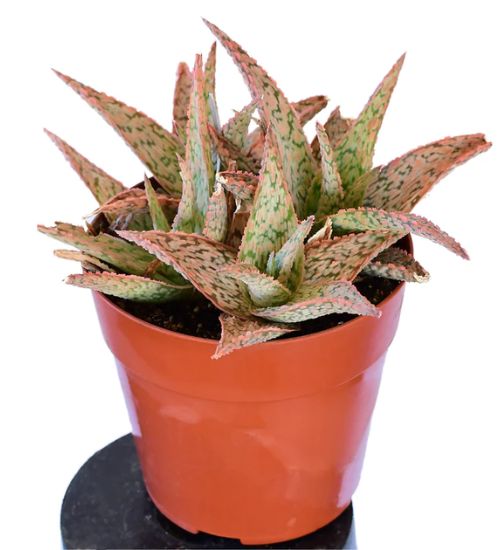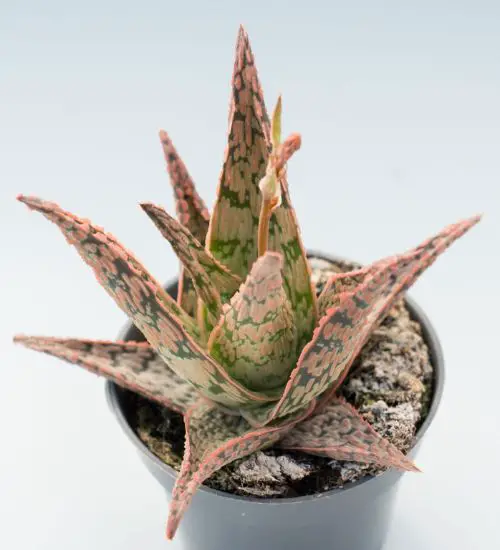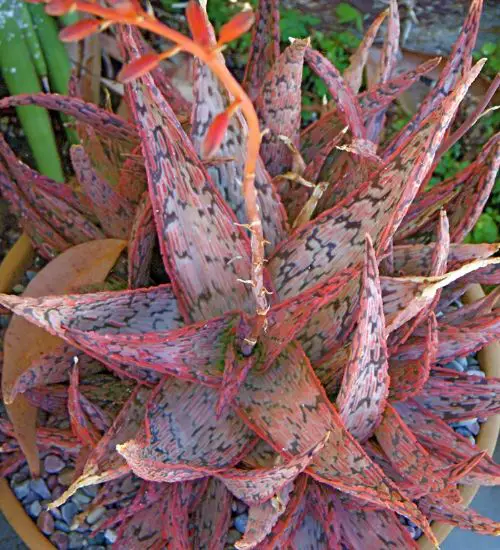Sun: Full sun to light shade
Water: More water than a typical succulent
Temperature: Zone 1a from -60° F to -55° F (-51.1 ° C to -48,3° C) to Zone 11b from 45° F to 50° F (7.2° C to 10° C)
Winter Survival: Not cold hardy
Propagation: offsets, stem cuttings, division
Flower: in late winter or early spring
Flower Type: Orange
Toxic: Generally non-toxic to humans and animals
Dormant: winter
Space Requirement: Indoors & Outdoors
Common Problems: Plants may rot if overwatered, pests
Basc Care for Aloe ‘Pink Blush’
Watering
Watering for Aloe ‘Pink Blush’ is a simple task. It requires More water than a typical succulent.
One simple tip for you is that you can use some online apps to check the soil status before you go water your succulents. I would recommend the ThePlantsCheck app, it has some nice features there.
Fertilizing
Only feed this succulent during its active growing seasons which means Unknown - Tell us. Use the right fertilizer applied in the right amounts. Applying half-strength balanced fertilizer every month or so is recommended for optimal results.
Do not fertilize during winter as the plant is dormant.
Sun & Location Requirements for "Aloe ‘Pink Blush’"
Aloe ‘Pink Blush’ thrives in full sun to light shade. This means that it should be exposed to direct sunlight for most of the day for optimal growth and health. Make sure your succulent is placed in a spot where it will receive no more than 5 hours of shade each day.
As per this succulent profile, it is only able to stay healthy when the environment temperature is above the range of zone 1a from -60° F to -55° F (-51.1 ° C to -48,3° C).
When temperatures drop below freezing, it is important to take precautions to protect Aloe ‘Pink Blush’ from the cold. Insulating and providing adequate drainage for the plant are key elements in helping it survive winter weather. Wind and sun exposure should also be minimized to prevent frost damage.
Any succulents in the group will need a medium space to grow. You can place your pot at your table or window. Since this plant needs more space than mini succulents, you should consider do not plant them together with other succulents/plants.
Aloe ‘Pink Blush’ also benefits from some indirect light throughout the day as well, so make sure you give it enough space to soak up light without becoming too exposed to heat.
Propagation
Propagating with offsets is a great way to get more plants from the same mother plant. All you have to do is cut away an offset and pot it in soil, and soon enough you’ll have a brand-new Aloe ‘Pink Blush’!
One of the easiest and most popular ways to propagate Aloe ‘Pink Blush’ is by stem cuttings. This method involves cutting a stem from an existing succulent and planting it in soil to grow a new plant.
Toxicity

Aloe ‘Pink Blush’ is not known to pose any significant health risks, as it is not considered to be toxic. However, it is best to keep the plant away from young children and pets, as they may ingest some of the parts of this plant that could contain toxins which can cause mild skin irritation.
Pests and Diseases
Aloe ‘Pink Blush’ can be affected common pests and diseases like most of the other succulents such as bugs.
If you do spot any of pest signs, you can treat your succulent using below methods.
- Bugs: quarantine, systemic insecticidal/soapy water.
Besides that, to prevent serious health issues from happening, keep your succulent in a well-ventilated area and check it regularly for any signs of pests or health problems.


